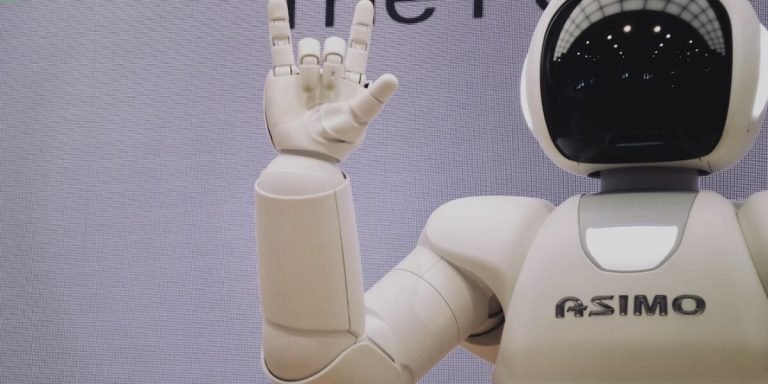Instructional Technologies: Revolutionizing Childhood Education
As we navigate the 21st century, “instructional technologies” are quickly becoming integral to childhood education. These modern tools transform traditional teaching methods and provide innovative ways for youngsters to learn, interact and engage in a classroom or virtual setting. The transition from typical chalk-and-blackboard techniques towards technology-infused learning is creating real change in our children’s educational experiences.
The role of technology integration isn’t merely about using digital devices; it’s also about leveraging these resources to create an immersive learning environment that fosters creativity, collaboration, critical thinking, problem-solving skills among students. From maximizing student engagement with interactive whiteboards to enhancing individualized instruction through adaptive software – this blog post explores how instructional technologies can revolutionize childhood education while preparing learners for a digitized future.
Did you know?
Did you know? The Socrative app, an instructional technology used worldwide, supports real-time interaction between students and teachers – effectively revolutionizing childhood education by making it more engaging and interactive.
The Role of Instructional Technologies in Enhancing Learning Outcomes
In our tech-driven world, instructional technologies are now recognized as instrumental tools in enhancing learning outcomes. They have not only transformed teaching methods but also reshaped the traditional notion of classrooms by providing engaging and interactive educational experiences that cater to individual learners’ needs.
Emerging technologies like artificial intelligence (AI), augmented reality (AR) or virtual reality (VR), gamification techniques, adaptive learning systems collectively contribute to a more personalized, effective and inclusive method of instruction. AI-guided platforms can adapt their content according to students’ pace and style of learning, helping them grasp concepts better. At the same time AR/VR can aid in creating a vivid visualisation promoting retention while gamified lessons make education fun for youngsters thus boosting motivation levels.
Technology integration also bridges geographical barriers enabling distance-learning options maintaining continuity during unforeseen circumstances such as pandemics or natural disasters hence demonstrating its significant role beyond classroom settings.
Understanding the Impact on Student Engagement and Retention
Firstly, let’s dive deeper into understanding their effect on student engagement. Instructional technologies like multimedia presentations, interactive whiteboards or online quizzes can make flexible teaching methods a reality by catering to various learning styles. Visually appealing content with audio-video elements attracts learners who might struggle with traditional text-heavy materials.
In addition, these tools encourage active participation from students as they offer immediate feedback allowing for quick rectification of errors along the way leading 2023 educational trends.. The prospect of real-time interaction during lessons significantly increases interest levels among pupils which reflects positively on their attention spans too.
Equally important is the role instructional technologies play regarding student retention – an often overlooked yet crucial aspect within education circles needing urgent redress considering it’s 2023 already essentially ensuring that what is learnt today remains cemented in memory tomorrow- this directly impacts academic performance long term.
Evaluating Performance Improvements Through Edu-Tech Tools
“In the age of digitalization, utilizing instructional technologies to evaluate performance improvements has emerged as an essential strategy for progressive education. These edu-tech tools not only streamline processes but also hold potential in significantly enhancing learning outcomes.
The effectiveness of these educational tech-tools can be observed in real-time data tracking. Digital platforms offer educators immediate access to a student’s academic progress; providing comprehensive analysis that helps pinpoint where attention is required or what aspects need revision. This enables teachers and parents alike to implement corrective measures promptly, fostering optimized holistic development for every learner.
Additionally, interactive features incorporated into modern-day instructional technologies help ignite enthusiasm among students by transforming mundane lessons into engaging activities through games, quizzes and multimedia presentations. They employ diverse modes of instruction appealing inclusive learning preferences – from visual aids for visual learners to podcasts for auditory learners.
Moreover, such applications often include adaptive learning systems which tailor content according to an individual’s needs ensuring personalized pathways are provided thus catering different pace and style of each student – making assessments more than just a grading tool but rather developmental guides.
Another standout feature with these innovative resources would be their capability is facilitating collaborations on projects despite geographical constraints – promoting peer-learning experiences whilst having global exposure at same time.
Overcoming Challenges in Implementing Technology Integration in Schools
In this digital era of 2023, the course of education has been decidedly swayed by instructional technologies. Not only do they provide an enhanced learning experience to students but also open doors for interactive and engaging classrooms that were once a far-fetched dream. However, we ought not forget the implementation challenges one might face in incorporating technology integration into teaching methodologies at our schools.
Educators often resist new technological tools due to unfamiliarity, fearing proficiency issues during instruction time. However, administrators can play a pivotal role by investing in professional development programs that empower teachers to effectively use these tech-tools, thus enriching educational experiences.
Anticipating infrastructure changes is next; the following form the backbone of technology-integrated learning:
- Reliable internet connectivity
- Adequate devices
- Robust software systems
Financing such widespread infrastructural shift is another substantial challenge.Many schools especially those located in disadvantaged areas find it hard to allocate budgetary resources needed.Engineering partnerships with local businesses,crowdfunding initiatives or applying for government grants may prove beneficial.Schools must strategize well before stepping ahead so as not let costs overshadow potential benefits brought forth by effective incorporation of cutting-edge “instructional technologies” into today’s schooling system.
Identifying Common Obstacles to Effective Technology Use
Effective technology integration in education is a powerful tool for enhancing student learning outcomes. However, schools often encounter certain obstacles when introducing instructional technologies into their curriculum. To enable successful implementation, it’s vital to identify and address these common challenges.
Firstly, the lack of proper training for educators plays an integral role in hindering effective usage of technology tools. Teachers should be provided with comprehensive workshops on how to integrate digital resources adeptly into their teaching methods.
Secondly, technological disparities among students can create unequal opportunities for learning—often referred to as the ‘digital divide.’ This issue can usually be traced back to socio-economic factors that restrict access which affects participation levels within digitally equipped classrooms.
Thirdly, outdated or insufficient physical infrastructure also constrains tech-integration efforts. Schools need robust Wi-Fi networks plus updated hardware like computers and smart devices accessible by all learners during school hours.
Fourth obstacle includes budget constraints faced by many institutions unable to afford latest educational software and other e-learning materials needed for tech-infused study environments; thus limiting advancement possibilities they could provide through intellectual technologies otherwise.
Strategies for Training Educators in Instructional Technologies
As we delve deeper into the digital era, instructional technologies become vital tools in our educational system. Learning how to effectively implement these tools can present challenges; however, with proper training and strategies, educators can overcome those obstacles.
1. Continual Professional Development: This is pivotal as technology evolves at a break-neck speed. Regular workshops or online tutorials that keep teachers updated on new applications should be arranged by schools.
2. Peer Mentoring: Experienced staff members who have successfully integrated technology into their classrooms could mentor less technologically proficient colleagues. Sharing hands-on experience accelerates learning and makes it more relatable.
3.Tech-Specific Education Programs: These are designed specifically around implementing instructional technologies into teaching methods which may include earning additional certifications or masters degrees focused solely on this subject matter.
4.Team-Based Approach: Integrating an environment such as Google Classroom encourages joint effort between pupils and educators fostering synergy of thoughts while utilizing the features of classroom management software.
6.Building Online Communities – Teachers from different regions sharing ideas about successful tech initiatives expands knowledge boundaries beyond school walls.
Emerging Trends in Educational Technology and Classroom Application
In the rapidly evolving field of education, integrating instructional technologies has become pivotal. It’s not just about embracing change; it’s now a necessity to optimise teaching and improve student comprehension levels. With every passing year, new tools and applications are developed that can greatly enhance both in-person and remote learning experiences for students across all age groups.
One emerging trend we’re seeing in 2023 is the rise of immersive technology within classrooms such as virtual reality (VR), augmented reality (AR), or mixed Reality (MR). These powerful tools help educators transcend traditional barriers to instruction by creating an interactive environment where abstract concepts come alive. From historical tours through VR headsets to scientific experiments via AR apps – these remarkable innovations truly redefine what effective ‘experiential learning’ entails.
The increased use of data-driven instruction represents another important shift towards individualised education strategies powered by Instructional Technology. Artificial intelligence systems track progress accurately over time, serving tailored content based on learner’s strengths or areas needing improvement – making personalised instructions more achievable than ever before.
While concerns relating to privacy remain valid, advancements continuing unabated point toward future where each learner benefits from highly customised educational pathways drawn up using their unique learning patterns.
Integration isn’t without challenges though! Teachers need regular training updates so they harness potential effectively while ensuring information remains accurate & relevant during dynamic digital shifts inevitably shaping our next generation’s classroom experience.
Incorporating AI and Machine Learning into Curricula
Incorporating AI and Machine Learning into curricula has been an emerging trend in recent years, paving the way for exciting advancements in instructional technologies. Given how these tools are steadily transforming various industry sectors, it is not surprising to find them making deep impacts on education.
The adoption of artificial intelligence (AI) within the classroom offers numerous benefits. It allows educational content to become more interactive and engaging while personalized learning experiences facilitate every child’s unique needs effectively. This level of customization was previously impossible with traditional teaching methods but thanks AI’s ability to analyze student data accurately that makes such individualized attention possible now.
Machine learning, a crucial aspect of AI also contributes immensely towards reshaping modern education systems by providing pathway predictions based on past behaviors or performances which can then be used as input for necessary adjustments if needed.
Moreover, incorporating machine learning algorithms enables educators to identify students potentially at risk earlier than ever before due their performance-based predictions thereby enabling proactivity from teachers’ end ensuring timely help delivered when required most leading ultimately improved results overall through predictive analysis – a notable advantage indeed!
Utilizing Virtual Reality for Immersive Learning Experiences
As the landscape of education continues to evolve, so does its methods and mechanisms. Among these emerging trends in educational technology, utilizing virtual reality (VR) for immersive learning experiences stands out as one of the most transformative instructional technologies.
VR transcends traditional boundaries within a classroom by offering students an interactive 3D environment that simulates real or imagined surroundings. This innovative teaching tool can turn abstract concepts into tangible experiences thus facilitating deep understanding – think history lessons brought to life through VR timelines, science classes studying ecosystems up-close with VR expeditions, and language art courses enriched with cultural explorations via VR world tours.
Moreover, it also allows educators to tailor-fit their instruction according to every student’s individual learning style which empowers personalized learning tracks like never before. Students who are visual learners grasp concepts more effectively when presented visually within this immersive context instead of mere textbook readings – almost like having a private tutor at hand!
What sets Virtual Reality apart is its adaptability across various age groups and subjects making it truly versatile among other instructional technologies available today. Be it elementary-level mathematics or university-grade architecture; there’s no limit where you could apply VR technology for maximizing comprehension while sparking curiosity amongst young minds.
Conclusion
In essence, instructional technologies are not just shaping the future of childhood education; they’re actively crafting it now. These tools foster a learning environment that’s engaging and dynamic, where children can delve deep into their curiosities and cultivate essential life-long skills. As we move further into this digital age, let’s remember to embrace these innovations but also understand how best to integrate them for maximum educational impact.
It doesn’t stop here though! Our website is teeming with more insights on innovative teaching methods, interesting parenting tips as well as broad-spectrum support resources for educators in general . So feel free to explore – there’s always something new to learn or an exciting concept you could introduce in your classroom or at home.
And remember: education isn’t just about preparing our kids for the world—it’s equally about preparing the world for our kids.







